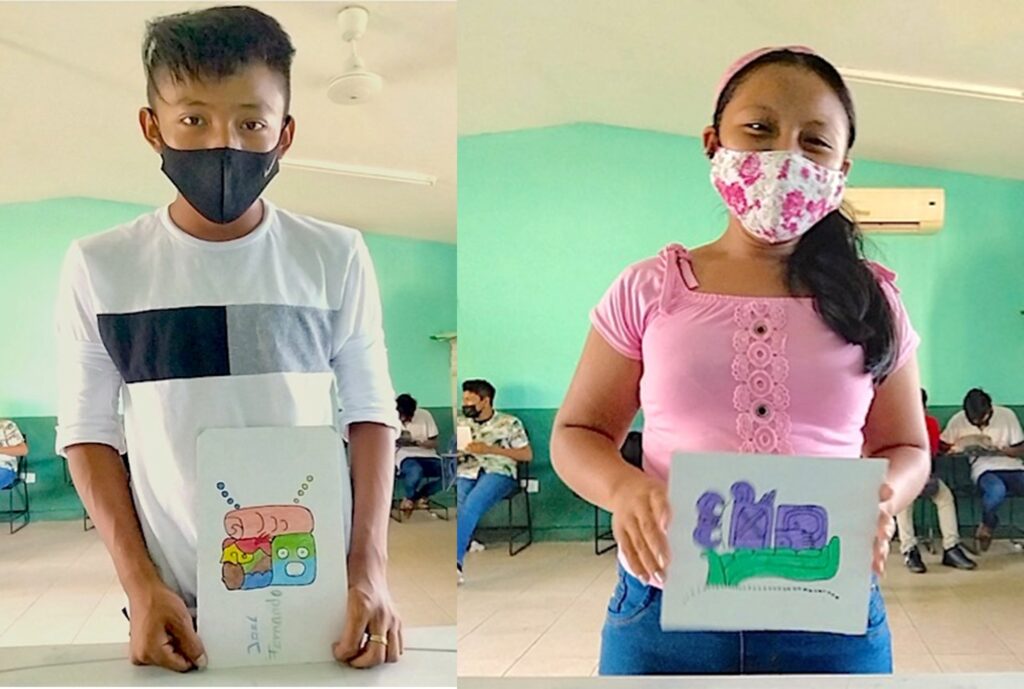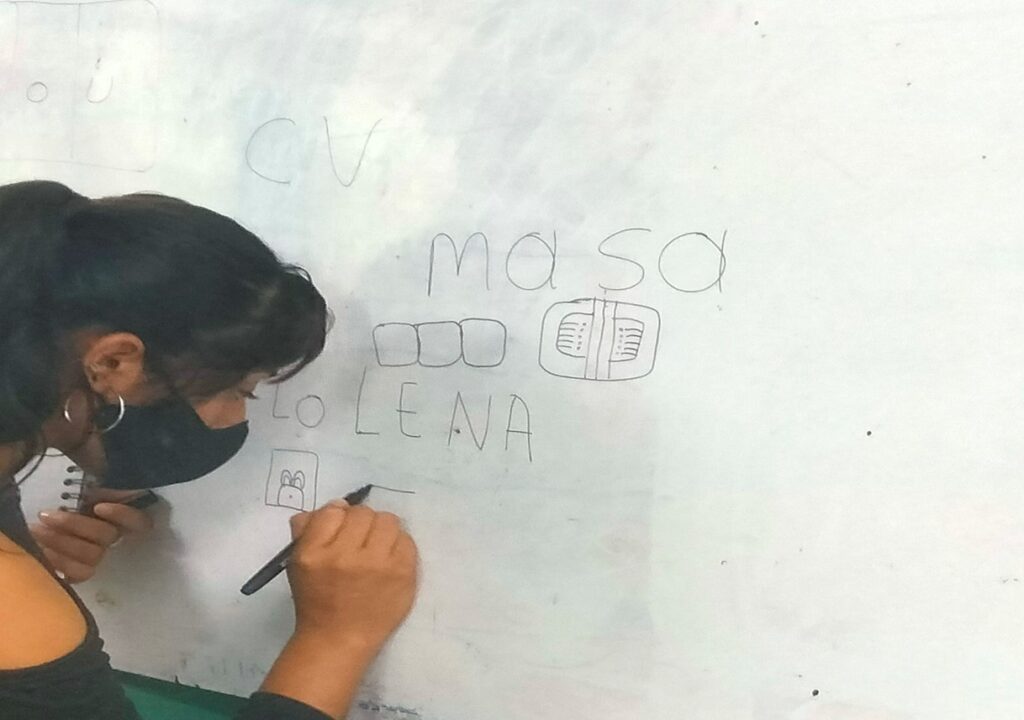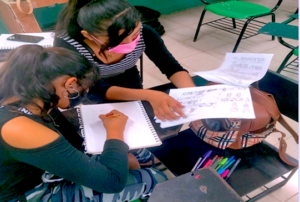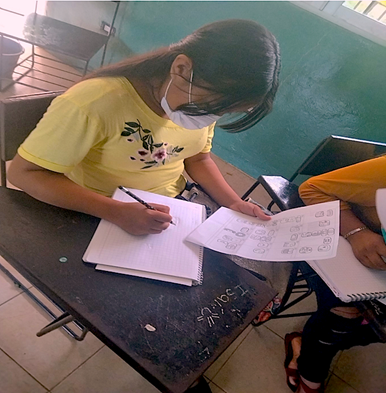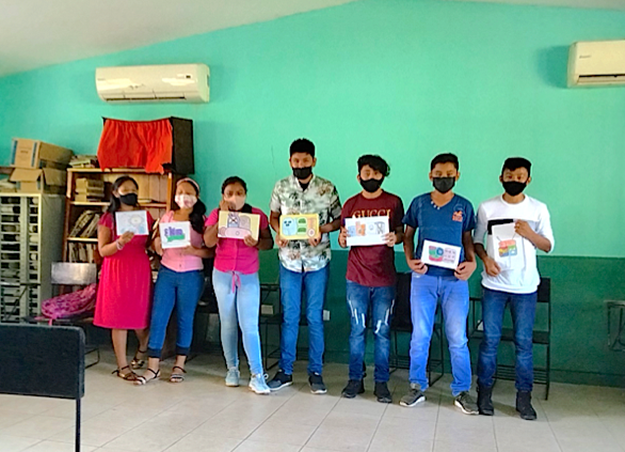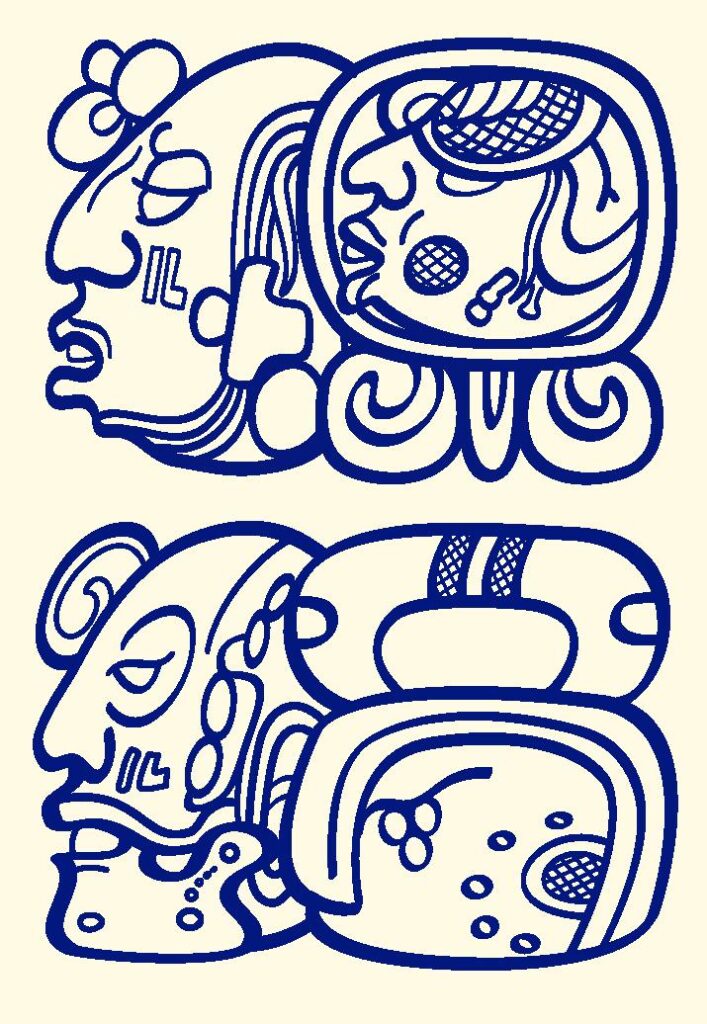
Haz clic aquí para leer la versión español
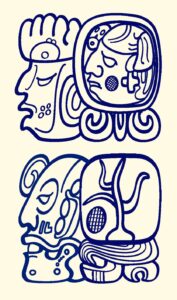
Jorge Pérez de Lara
The Morningstar Rises Out of Edén:
Adapting the Ojer Maya Ts’ib in Las A New Year for the Children of Yaxac Tizimin, Yucatan
We at MAM wish you all a happy Gregorian New Year! I hope you all had a safe holiday with family and friends.
While the nights are still long in the Northern Hemisphere, the light is once again returning after the winter solstice, and our precious planet now reaches its closest point to the sun at the perihelion, making our winter much shorter than the rest of the seasons as we travel at the fastest speed in our orbit. This year, the perihelion also coincides with the inferior conjunction of Venus as it passes at its closest point between the Earth and the sun during its short period of invisibility before it rises brilliantly as the Morning Star. It was this reappearance of Venus in the East before sunrise that was one of the most important astronomical events for many ancient Mesoamericans, and this period of invisibility was recorded in the Dresden Codex Venus table as the 8 days at the end of the 584-day observable cycle of Venus. Five of these Venus cycles return the rise of Venus as Morningstar to a day Ajaw, and to the same time of year, since five cycles of 584 days is equal to 8 cycles of 365 days. The Maya, as well as other Mesoamerican astronomers, well understood these five cycles of Venus, and they are clearly represented in the five pages of the Dresden Venus Table, while they are equally suggested over two thousand years ago in the murals of San Bartolo, with its five self-sacrificing deities, one of which is clearly named as Ek’ Winik ‘Venus/Star Man’.
For the past two weeks, Venus has appeared to dive down towards the sun, thus appearing to jump into a fire, and in a little over a week from now, Venus will re-emerge, symbolically unscathed as Morning Star. It is likely that this astronomical event served as a template for the self-sacrifice of Hunahpu from the K’iche’ Popol Vuh, whose ashes are placed into a river prior to his rebirth. In another story from Central Mexico, the heroic Toltec ruler Ce Acatl Topiltzin Quetzalcoatl burns himself on a pyre prior to having his ashes cast in the water, and his heart returns as Venus, rising in the East as Morningstar.
The name Hunahpu is equivalent to the Classic day name 1 Ajaw in the 260-day count, which we celebrated in our last report of 2021, and the Dresden Venus Table tells us that a complete run of 13 repetitions of five cycles of Venus is coordinated to return the rise of Venus as Morningstar specifically to the day 1 Ajaw after 104 years—a length of time that exceeds most human lifetimes. 104 years is beyond most of our abilities to directly remember, so we must rely on the written words of our predecessors, just as the Maya did.
The Dresden Codex Venus Table. compiled from the Förstemann version on FAMSI
http://www.famsi.org/mayawriting/codices/dresden.html
As we try to relate to the vastness of this 104-year Venus cycle on a human scale, we see that it was 104 years ago that the world was in even more challenging circumstances with the first World War raging in its final year, and the great flu epidemic of 1918, for which there was no vaccine yet available. One need only look at photographs of that time to see so many people around the world wearing cloth masks as we do now. Yet, the world emerged from that epidemic, as we will hopefully soon emerge from this one.
To commemorate this year of hopeful beginnings, Gloria Nayeli Tun Tuz reports back from the aptly named town of Edén, in Yaxic Tizimin,Yucatan with the first report we have received from the mini-grants we awarded in 2021 that were designed to support online workshops. Gloria’s introductory workshop from September of 2021 consisted both of online instruction over Zoom, as well as limited face-to-face instruction using masks, given that this was already permitted in the school system. We hope to be able to share some of the instructional videos Gloria created, along with other video content from MAM-funded online workshops in the future.
It has been a long and weary two years of this pandemic, and there continues to be so much loss and grief, particularly for our Maya friends, many of whom have yet to receive their first vaccinations. As we all enter a new year accompanied by the rebirth of Venus, may this coming year bring some much needed relief and revitalization for all of us.
Yuum Bo’otik,
Michael Grofe, President
MAM

Epigraphy Workshop in El Edén, Yaxic Tizimin,
beginning September 15, 2021.
Gloria Nayeli Tun Tuz
The project planned for the application in the community of Chichimilá, Yucatán could not be carried out as planned because another colleague had contemplated the same project for the community. Therefore, I decided to change the location of the application of the workshop, and for me it was greatly satisfying to impart this knowledge to the children of the community, who had no idea what it was about. Similarly, it was taught to 20 young people from the community of Eden, Yaxic, Tizimin in person, and some videos were also sent to them for reinforcement.
From my point of view it was of great use, since they felt happy with the new lessons learned. The workshop had an impact on the community, since for them it was something new, in addition to the fact that many of the young people had already gotten bored with being locked up in the community, due to the pandemic, so the workshop was very effective for them, and there were other people interested in it.
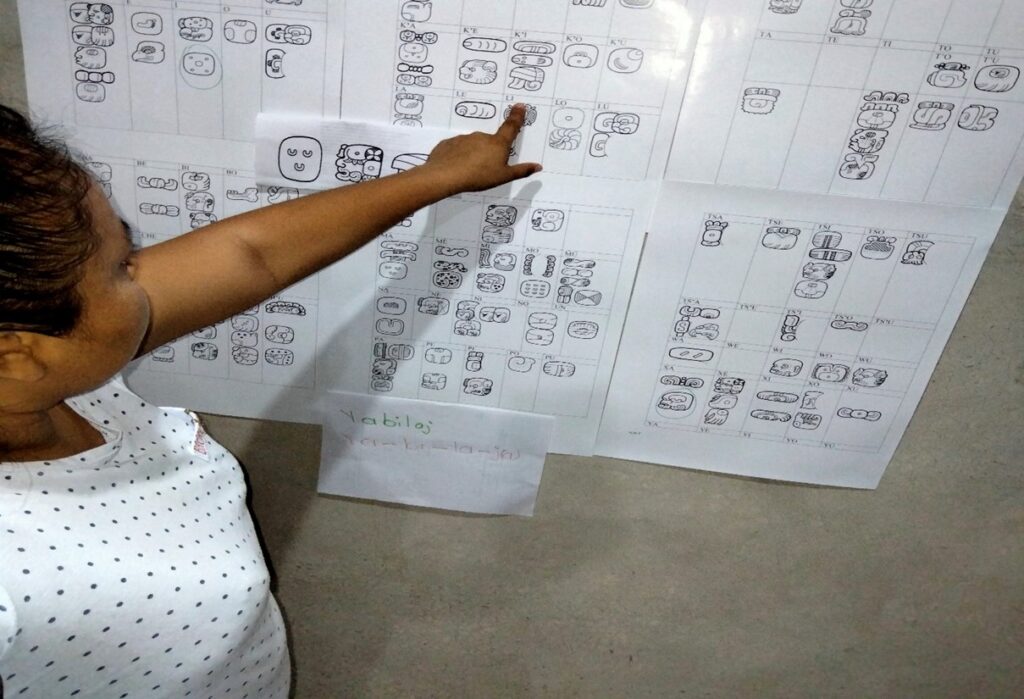
Recording a video presentation of the Maya syllabary for distance learning.
versión español
2 Ajaw 18 K’ank’in (3 de enero de 2022)

La Estrella de la Mañana se Levanta en el Edén:
Un nuevo año para los niños de Yaxac Tizimín, Yucatán
¡En MAM les deseamos a todos un feliz Año Nuevo gregoriano! Esperamos que hayan tenido unas vacaciones seguras con familiares y amigos!
Si bien las noches aún son largas en el hemisferio norte, la luz está regresando una vez más después del solsticio de invierno, y nuestro precioso planeta ahora alcanza su punto más cercano al sol en el perihelio, lo que hace que nuestro invierno sea mucho más corto que el resto de las estaciones mientras viajamos a la velocidad más rápida en nuestra órbita. Este año, el perihelio también coincide con la conjunción inferior de Venus, cuando se encuentra en su punto más cercano entre la Tierra y el sol durante su corto período de invisibilidad, antes de elevarse brillantemente como lucero de la mañana. Era esta reaparición de Venus en el Este antes del amanecer uno de los eventos astronómicos más importantes para muchos antiguos mesoamericanos, y este período de invisibilidad se registró en la tabla de Venus del Códice de Dresde como el período de 8 días al final del ciclo observable de 584 días de Venus. Cinco de estos ciclos de Venus nos devuelven al ascenso de Venus como lucero matutino en un día Ajaw y en la misma época del año, ya que cinco ciclos de 584 días equivalen a 8 ciclos de 365 días. Los mayas, así como otros astrónomos mesoamericanos, entendieron bien estos cinco ciclos de Venus, y están claramente representados en las cinco páginas de la Tabla de Venus del códice de Dresde, quedando sugeridos igualmente hace más de dos mil años en los murales de San Bartolo con sus cinco deidades que llevan a cabo autosacrificios, una de las cuales se denomina claramente Ek’ Winik ‘Venus / Star Man’.
En el curso de las últimas dos semanas, Venus pareció zambullirse en el sol, como si saltara al fuego, y en poco más de una semana a partir de ahora, Venus volverá a emerger, simbólicamente ileso, como lucero de la mañana. Es probable que este evento astronómico sirviera de modelo para el autosacrificio de Hunahpu’ en el Popol Vuh de los quichés, cuyas cenizas se depositaron en un río antes de su renacimiento. En otra historia del centro de México, el heroico gobernante tolteca Ce Acatl Topiltzin Quetzalcoatl se quema en una pira antes de arrojar sus cenizas al agua, y su corazón regresa como Venus, elevándose en el Este como lucero de la mañana.
El nombre Hunahpu’ es equivalente al nombre del día 1 Ajaw en la cuenta de 260 días del período Clásico—fecha que celebramos en nuestro último informe de 2021—en tanto que la Tabla de Venus del códice de Dresde nos dice que una serie completa de 13 repeticiones de cinco ciclos de Venus nos devuelve al ascenso de Venus como lucero de la mañana específicamente en un día 1 Ajaw cada 104 años, lapso que excede la mayoría de las vidas humanas. 104 años es un período que está más allá de las capacidades de recordar directamente de la mayoría de las personas, por lo que debemos confiar en las palabras escritas de nuestros predecesores, tal como lo hicieron los mayas.
La Tabla de Venus del Códice de Dresde,ompilado a partir de la versión de Förstemann en FAMSI.
http://www.famsi.org/mayawriting/codices/dresden.html
Mientras tratamos de conciliar la inmensidad de este ciclo de 104 años de Venus con la escala de una vida humana, vemos que hace 104 años el mundo se encontraba en circunstancias aún más desafiantes con la Primera Guerra Mundial en su último año y la gran epidemia de influenza de 1918, contra la cual aún no se disponía de una vacuna. Basta mirar fotografías de esa época para ver a gente de todo el mundo utilizando mascarillas de tela como hacemos nosotros ahora. Sin embargo, el mundo salió de esa epidemia y, con suerte, saldremos de esta pronto.
Para conmemorar este año de comienzos esperanzadores, Gloria Nayeli Tun Tuz informa desde el pueblo que lleva auspiciosamente el nombre de Edén, en Yaxic Tizimín, Yucatán, en el primer informe que hemos recibido de las mini-becas que otorgamos en 2021, diseñadas para apoyar talleres en línea. El taller introductorio de Gloria en septiembre de 2021 consistió en videos en línea, así como una instrucción presencial limitada con mascarillas, en virtud de que esto ya estaba permitido en el sistema escolar. Esperamos poder compartir algunos de los videos instructivos que Gloria creó, junto con otros videos de los talleres en línea financiados por MAM en el futuro.
Han sido dos años largos y agotadores de esta pandemia, y sigue habiendo mucha pérdida y dolor, especialmente para nuestros amigos mayas, muchos de los cuales aún no han recibido sus primeras vacunas. Ahora que todos entramos en un nuevo año acompañado por el renacimiento de Venus, que este año venidero traiga el alivio y la revitalización que todos necesitamos.
Yuum Bo’otik,
Michael Grofe, President
MAM

Taller de Epigrafía enEl Edén, Yaxic Tizimín,
a partir del 15 de septiembre de 2021.
Gloria Nayeli Tun Tuz
Como el proyecto planeado para la aplicación en la comunidad de Chichimilá, Yucatán no pudo llevarse acabo, debido que otro compañero había contemplado el mismo proyecto para dicha comunidad, decidí cambiar el lugar de la aplicación de dicho taller. Para mí fue una gran satisfacción impartir el conocimiento a los muchachos de la comunidad, quienes no tenían la menor idea de lo que se trataba. De igual manera se impartió a 20 jóvenes de la comunidad del Edén, Yaxic, Tizimin de manera presencial, enviándoseles algunos videos para reforzamiento.
Desde mi punto de vista tuvo un gran aprovechamiento, y los participantes estaban muy contentos con los nuevos aprendizajes adquiridos. El taller tuvo un impacto positivo en la comunidad, ya que para ellos fue algo nuevo, además de que muchos de los jóvenes ya se habían fastidiado de estar confinados debido a la pandemia, por lo que el taller tuvo una buena recepción entre ellos. Asimismo, hubo otras personas que se interesaron en el taller.

